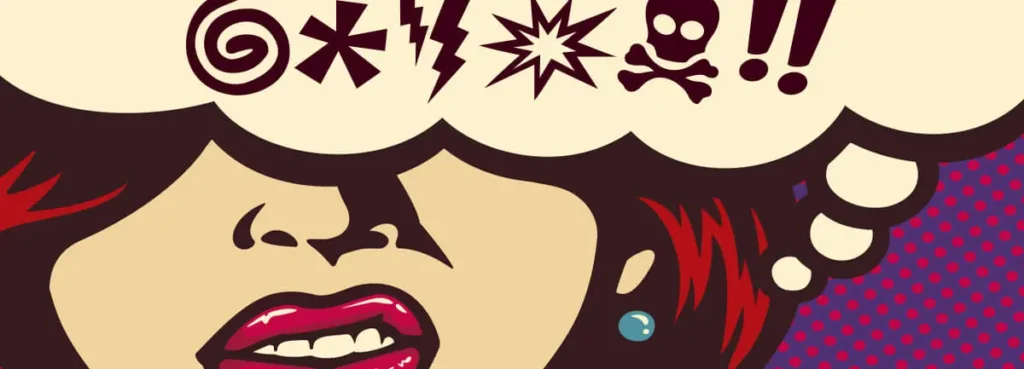Your marketing materials need to communicate your idea, reinforce your branding, and evoke a certain emotion or action from your audience. But they will only do this successfully if they have been created according to a set of tried-and-tested graphic design principles.
Here, I’m going to talk you through ten of the biggest mistakes I often see in marketing designs – and provide you with some handy tips that will help you avoid them!
1. Too many colours
Using many different colours will overload your audience – and a particularly busy scheme can even make your design look amateur.
To create marketing graphics that are well-balanced and easy on the eye, stick to two or three core shades, and pick a triadic combination with a primary colour, a secondary colour, and an accent colour that can provide that all-important final flourish.
2. Too much colour
Blocks of particularly bright or heavy colour are usually a no-no. They can create an unwelcome distraction from the text, or make it hard to read – and they also make your materials much more expensive to print, as more ink will be needed to reproduce your work.
For more information on the correct use of colour in marketing design, check out this comprehensive article on colour psychology from Orana Velarde.
3. Too little white space
Let your design breathe! Good use of white space between margins and paragraphs will make it much easier for the reader to scan the content. Empty space can also be used to draw the viewer’s attention to an important section of the piece.
Learn more on the benefits of spacing out your design elements here.
4. Boxy borders
Solid borders with lines of equal thickness at the top, bottom and sides of the design look somewhat dated these days. To give your design a more contemporary feel, use rules of different thicknesses – or, better still, use white space or a well-executed fade to separate design elements from each other.
5. Illegible typefaces
Readers get frustrated when they can’t make out the text within a design, so you need to choose a font or typeface that’s easy to skim-read, even in smaller sizes. Limit the use of decorative fonts outside of headers and opt for sans serif variations like Arial and Verdana instead.
6. Too many fonts
It’s acceptable to use a couple of different fonts in any one piece – perhaps one for your headers, and one for the bulk of your content – but, generally speaking, adding any more than this into your design will leave your work looking unprofessional.
(If you’re really keen to experiment with font styles and colours to create something unique, read this article first).
7. Poor font kerning
In typography, kerning involves adjusting the spaces between letters to achieve different effects. More often than not, you’ll need to use kerning to make your content more legible – for example, by bringing capital and lowercase letters closer together, or spacing out special characters.
This blog from Figma will talk you through some of the most common kerning techniques.
8. Bulky text
To make it easier for the reader to skim and digest your content, you need to break it up into manageable chunks.
You can do this by spacing paragraphs, inserting headers and subheaders, and experimenting with layout to draw the eye to important pieces of information.
9. Widows and orphans
A widow is the line at the end of a paragraph that falls at the beginning of the following page or column; an orphan is the line at the start of a paragraph that appears by itself at the bottom of a page or column. In layman’s terms, they are stray words that look out of place, and they will leave your design looking messy.
Avoid them wherever possible by extending the edge of the text frame, changing the margin alignment or experimenting with kerning.
10. Typos and other copy problems
There’s nothing worse than spending a great deal of time and money on a piece of marketing material, only to find multiple spelling, punctuation and grammatical errors in the finished piece. Always proofread your work before you sign it off!
